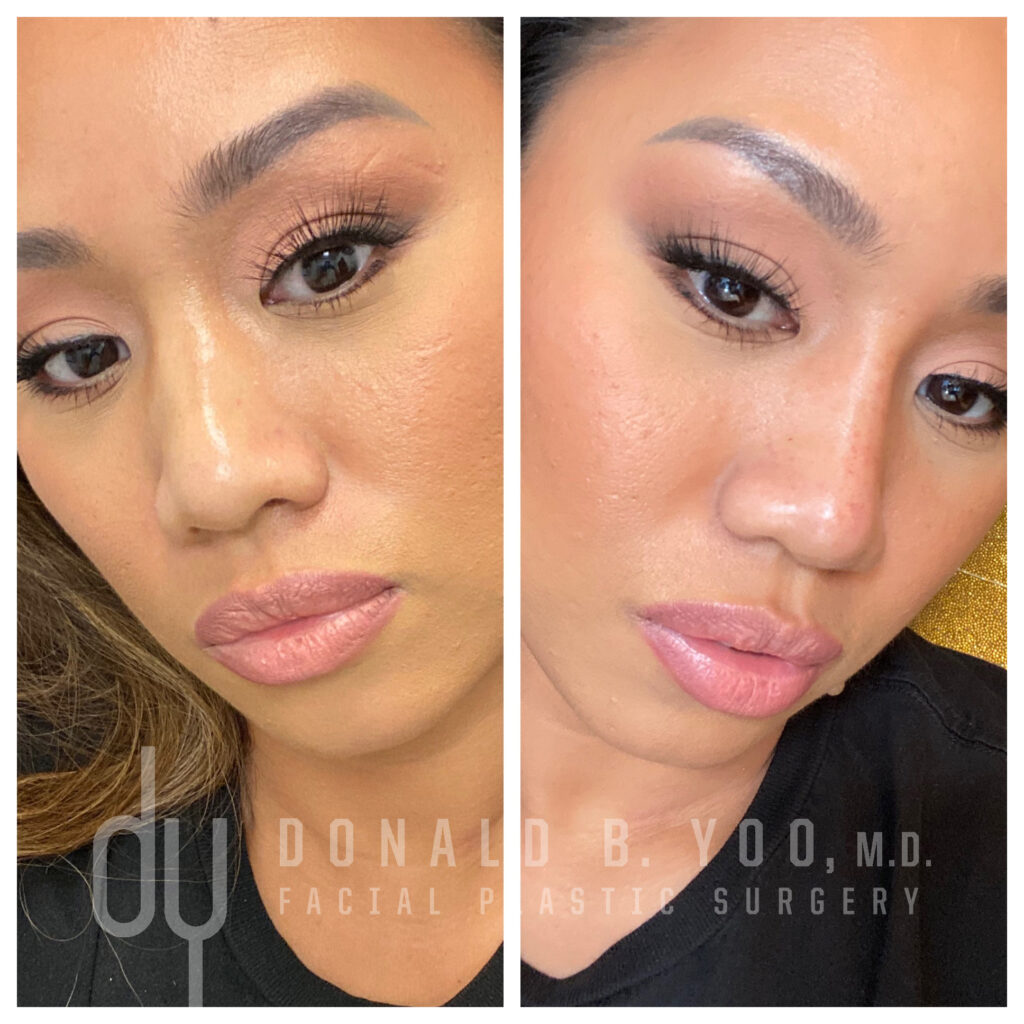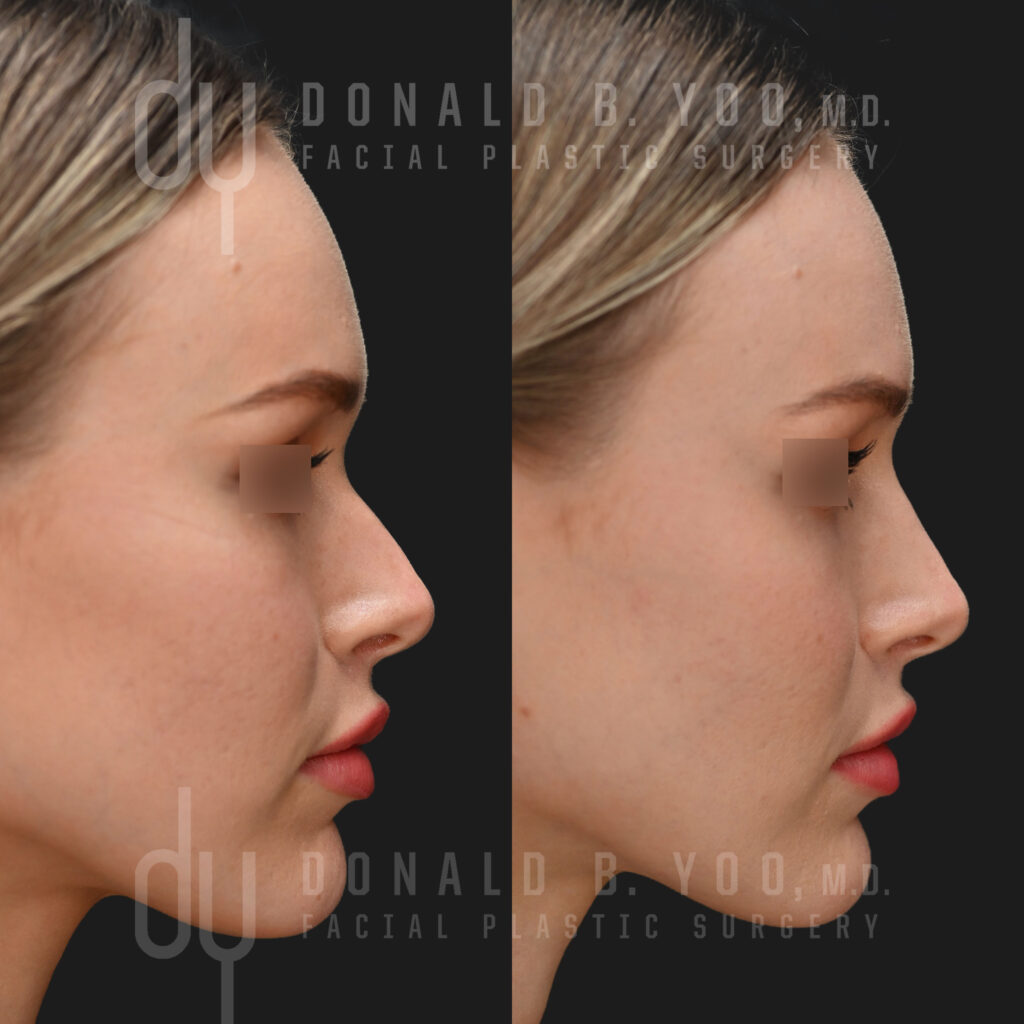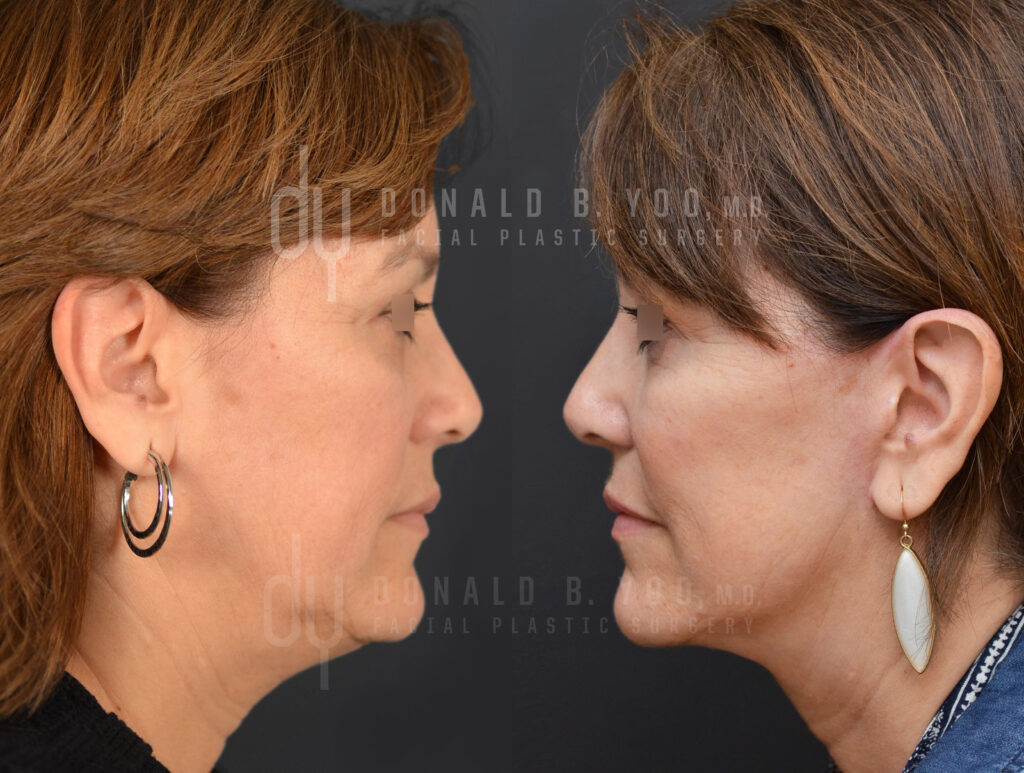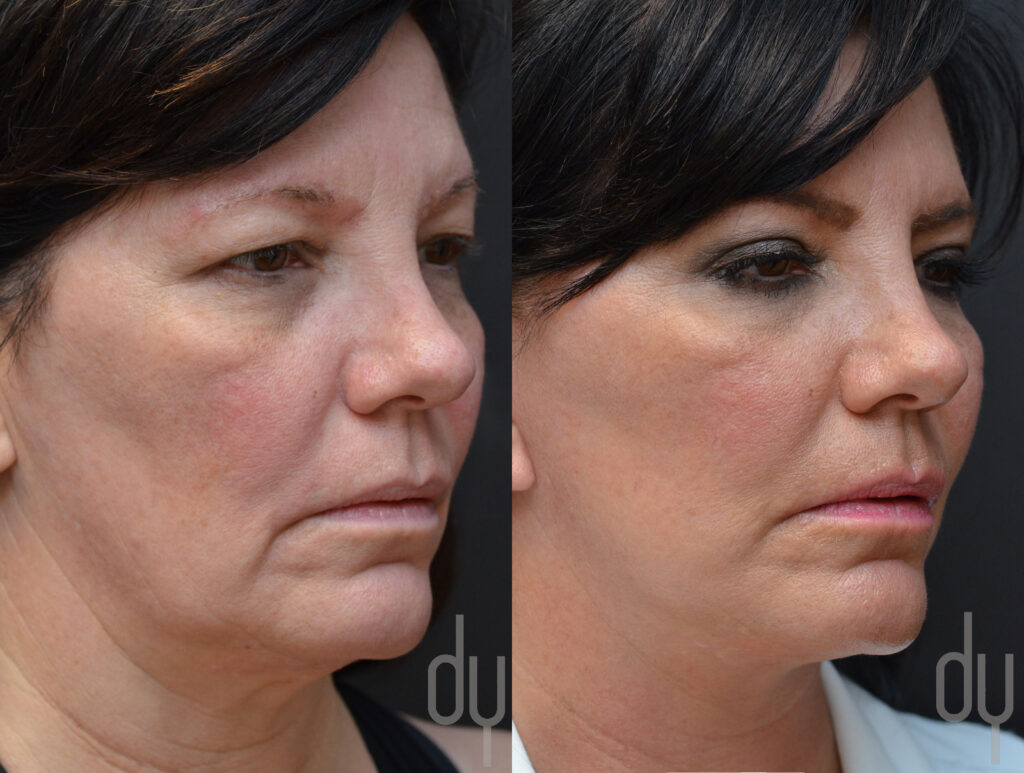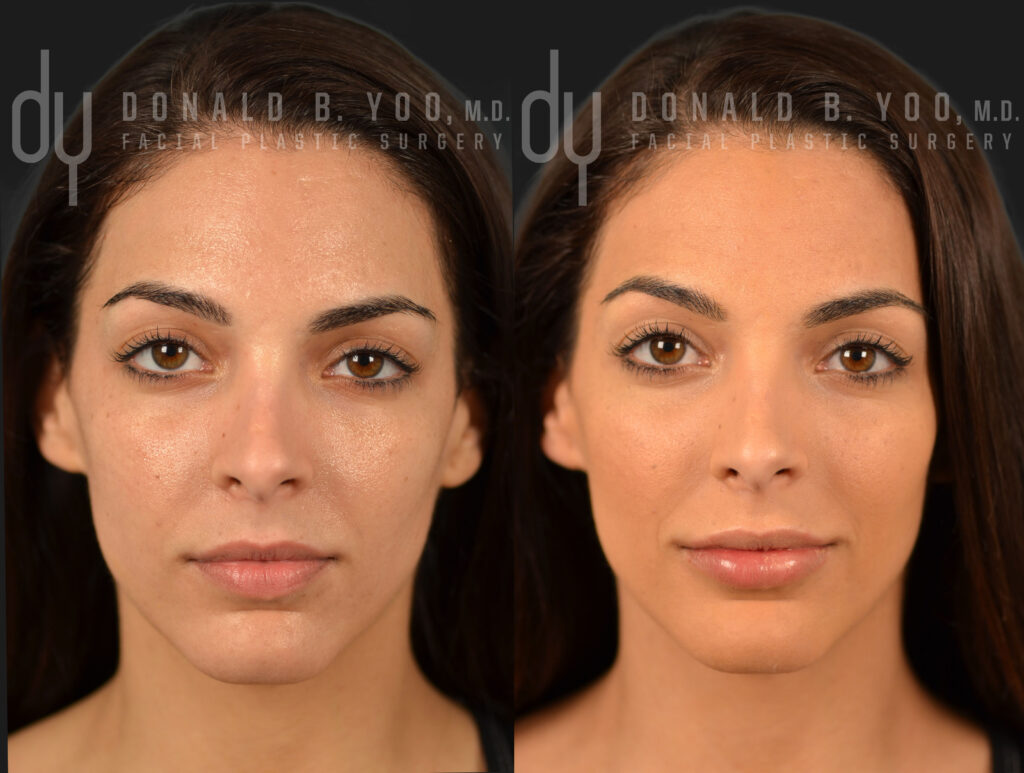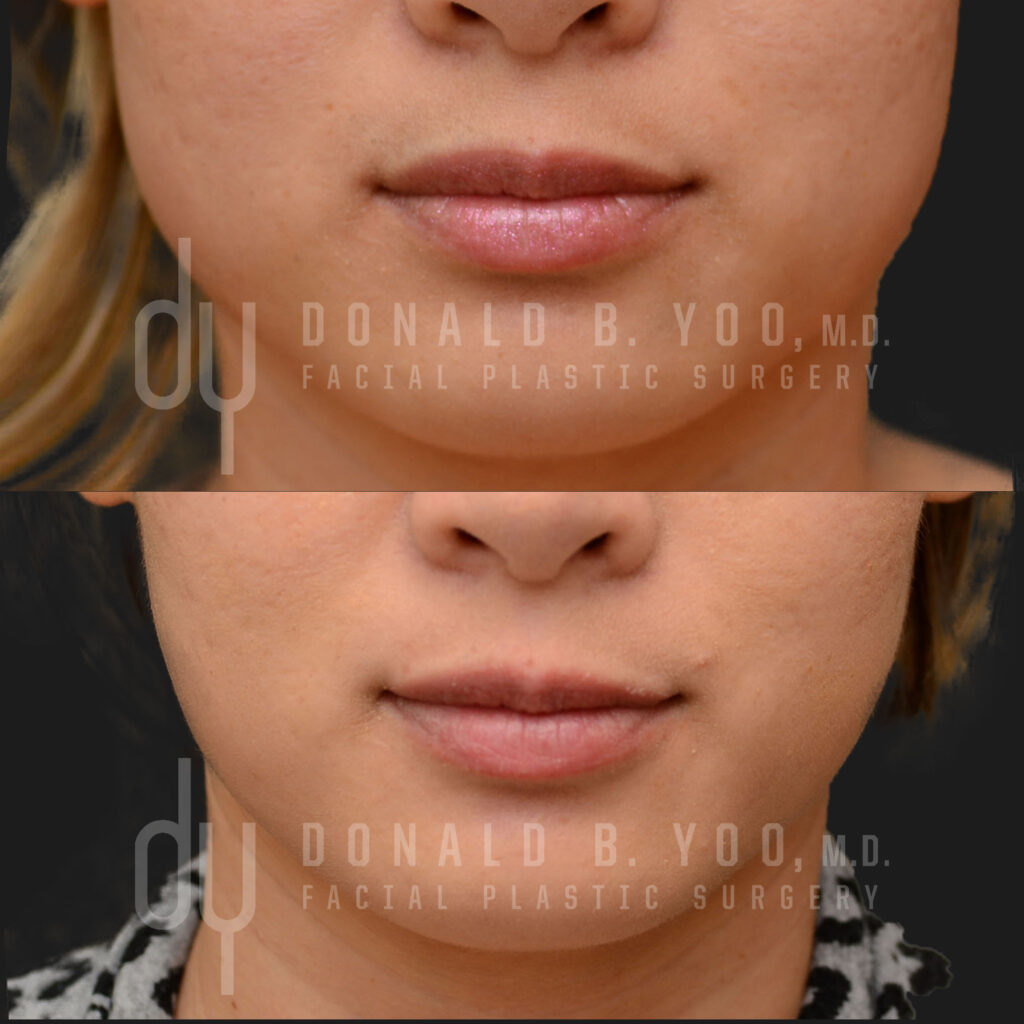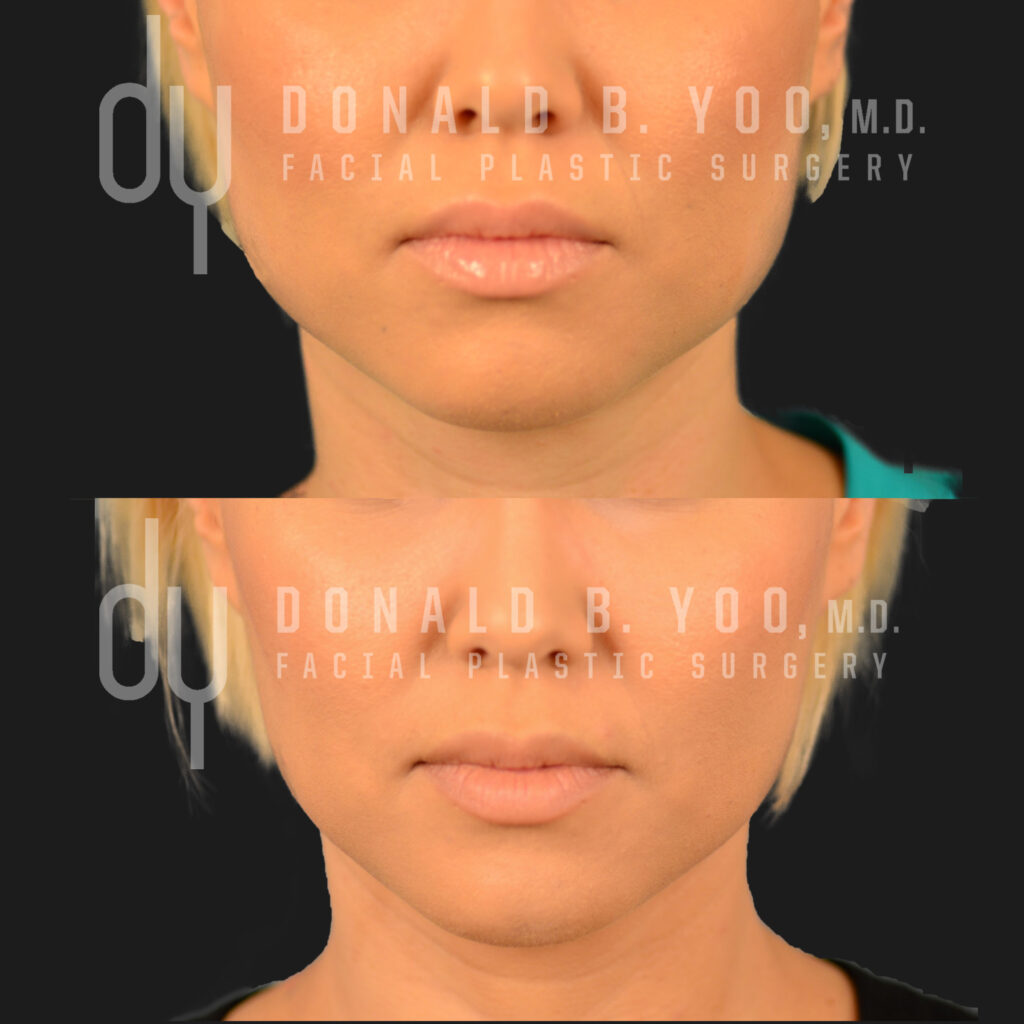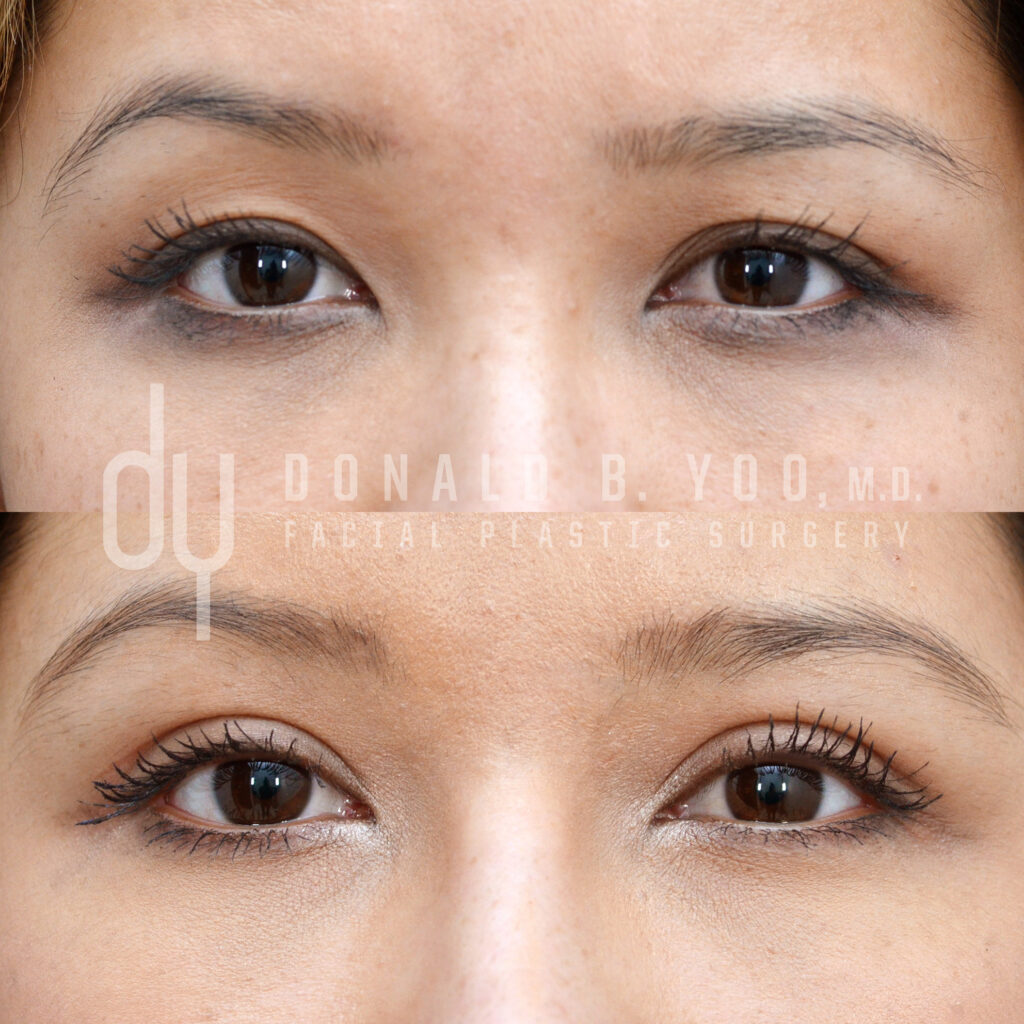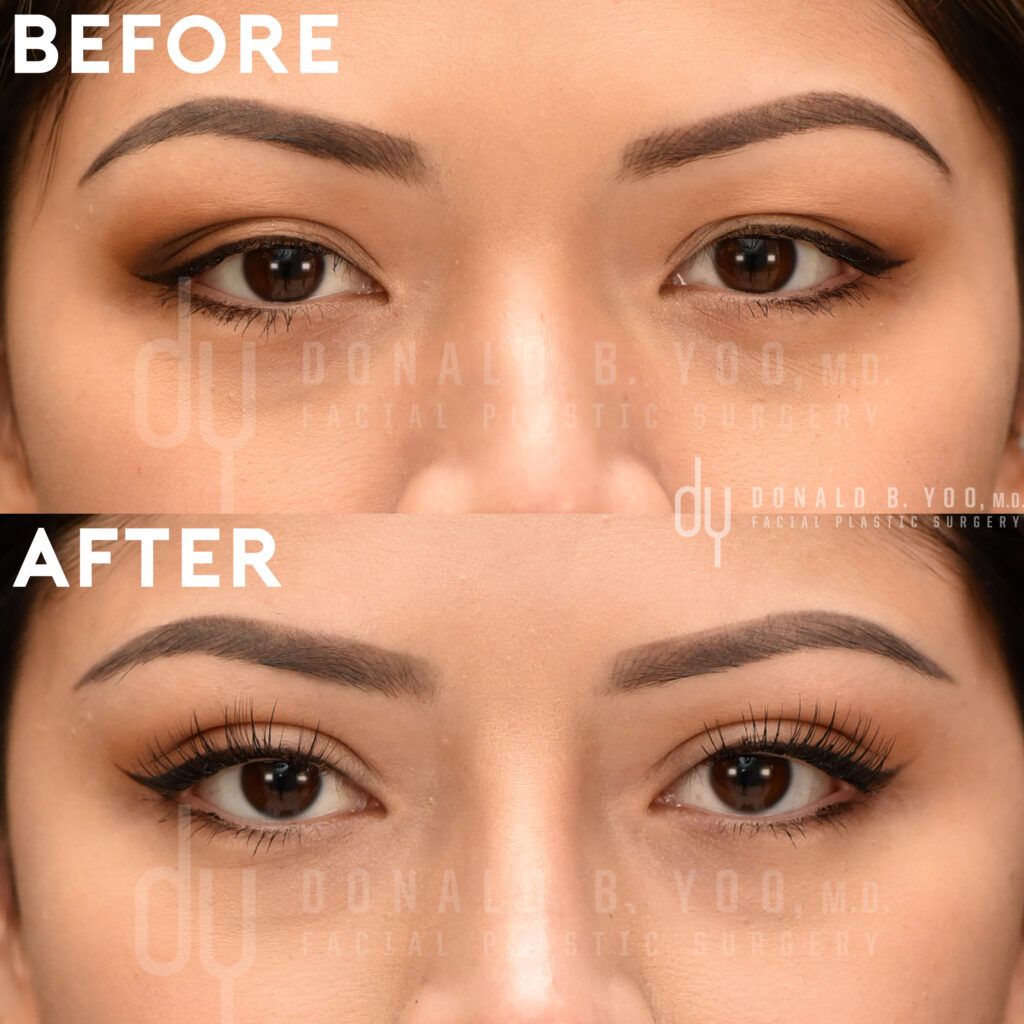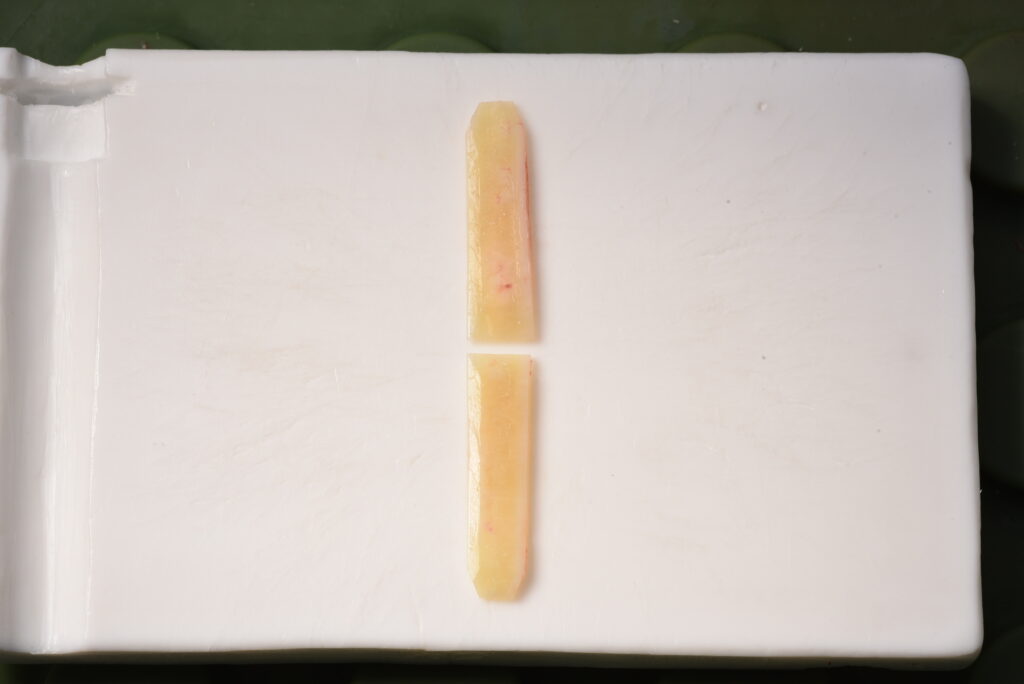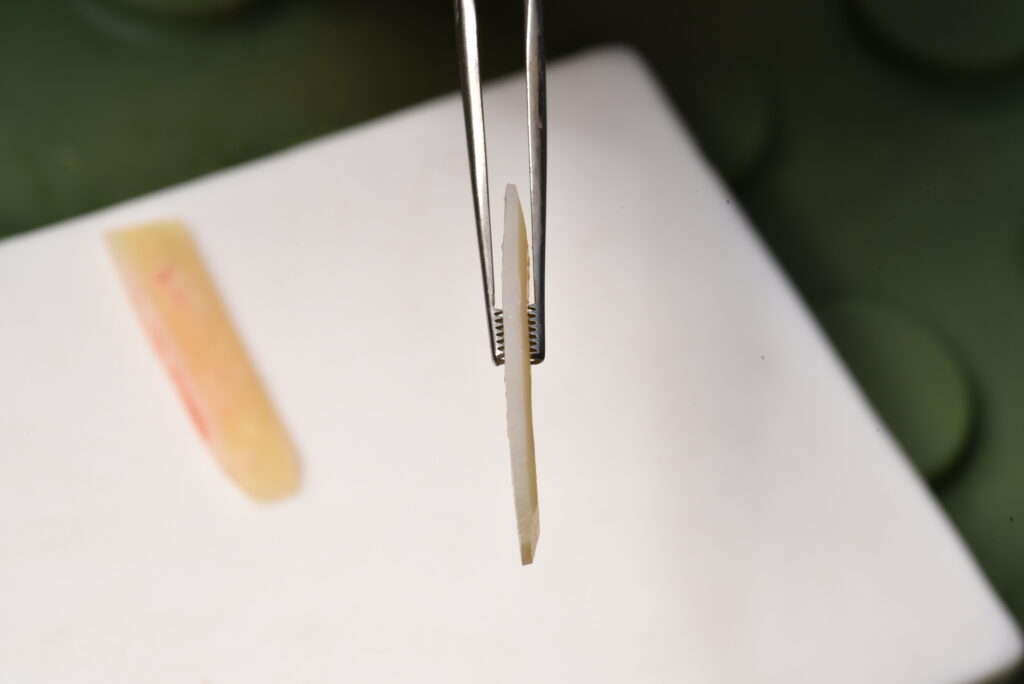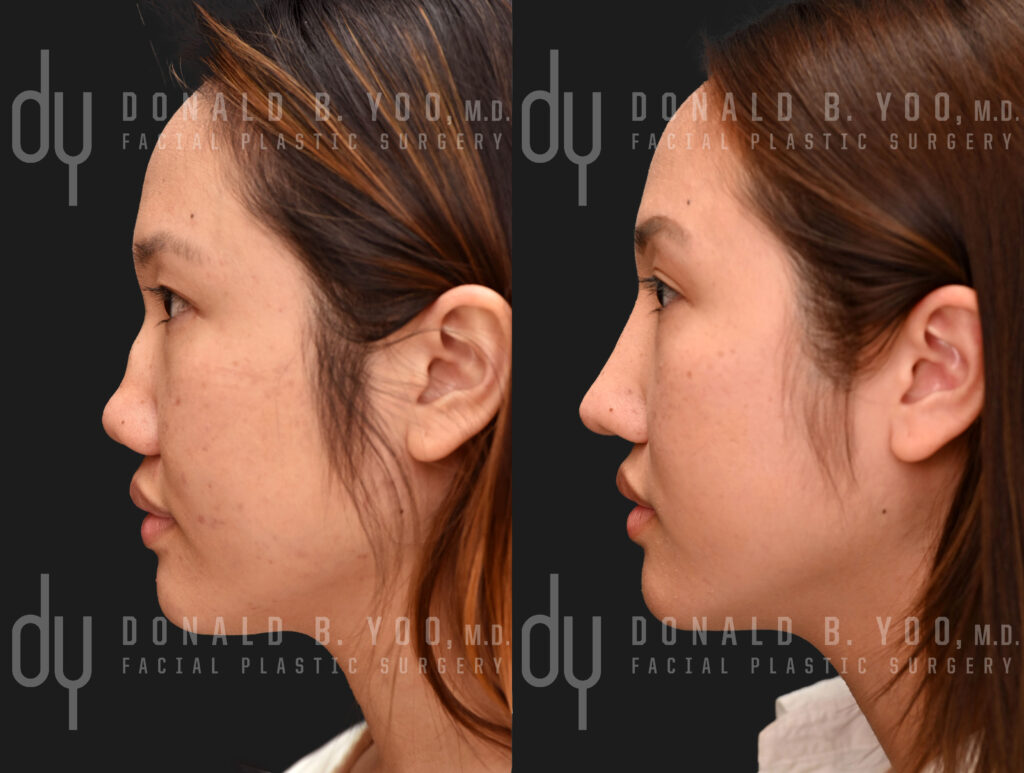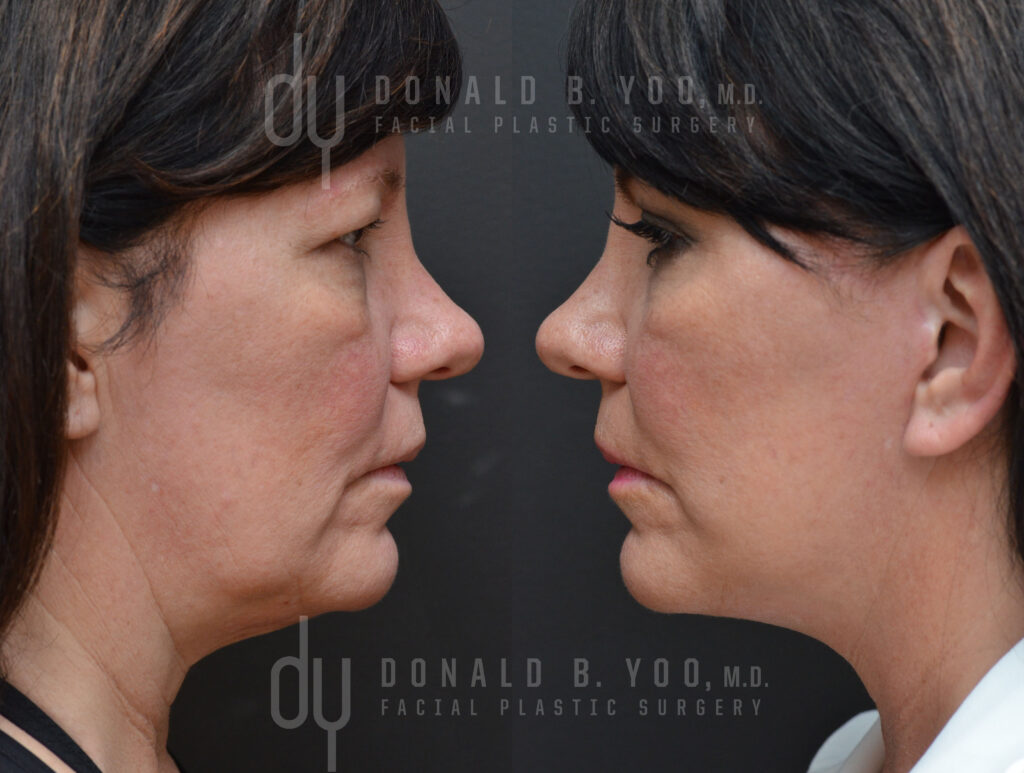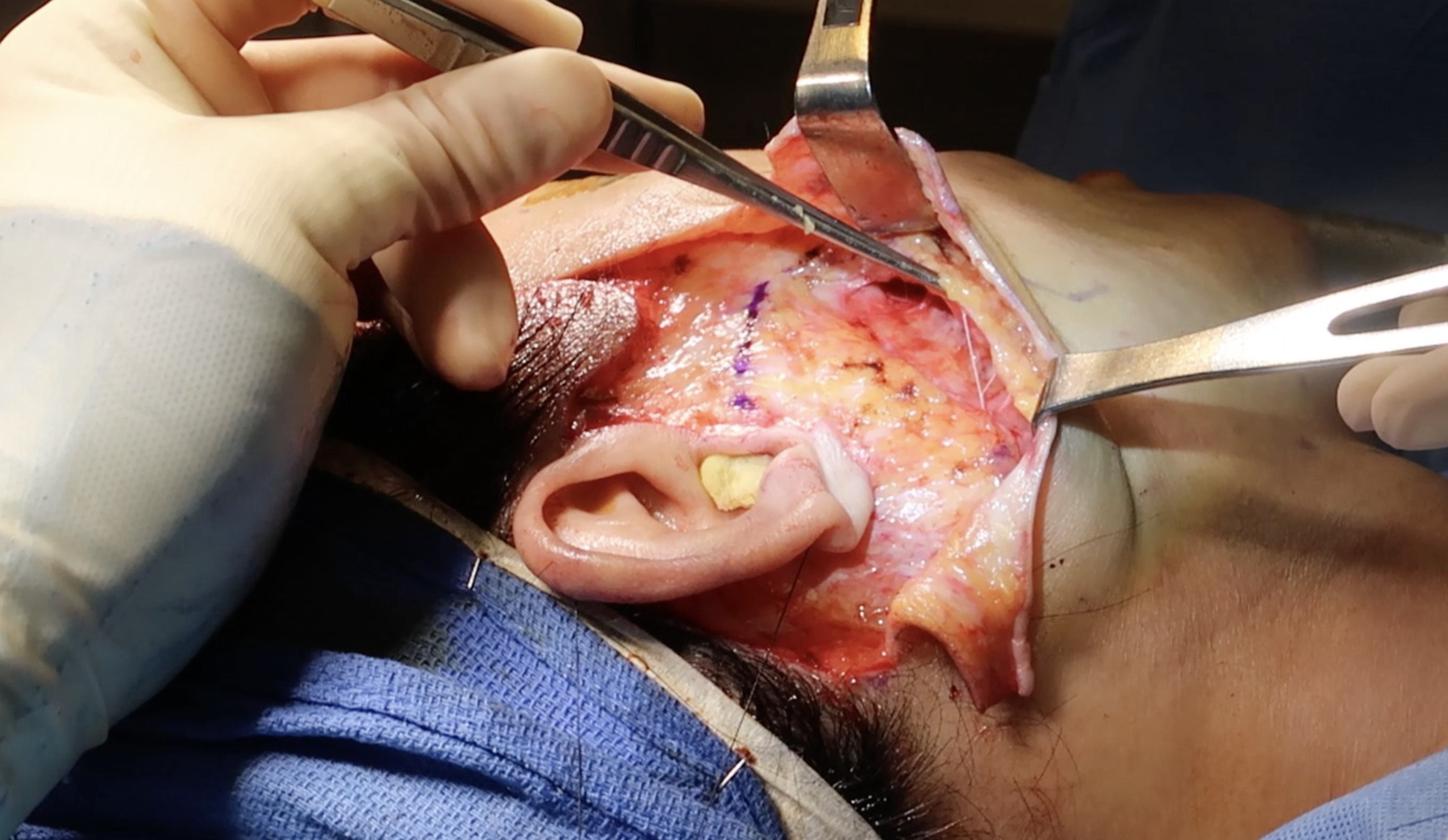Is Asian rhinoplasty different?
Asian rhinoplasty represents a unique subset of rhinoplasty surgery that requires specialized technical expertise and an aesthetic eye that is finely in-tune with Asian beauty standards. While a standard rhinoplasty procedure may involve reducing the size of a nose, removing a dorsal hump, and refining the tip the of the nose, Asian rhinoplasty and nose job surgery will often necessitate the addition of structural elements to the nose to add projection while also increasing the definition of the nose. In a standard rhinoplasty, often excess cartilage, bone and soft tissue may be removed to achieve the desired shape, with enough cartilage present in the septum to provide material for any grafts that may be necessary. In Asian rhinoplasty, typically the skin is thick relative to the strength of the intrinsic septal and nasal cartilage, and thus additional tissue (in the form of ear cartilage or rib cartilage) will be necessary to provide the requisite support to reshape the nose and skin envelope in a permanent fashion.
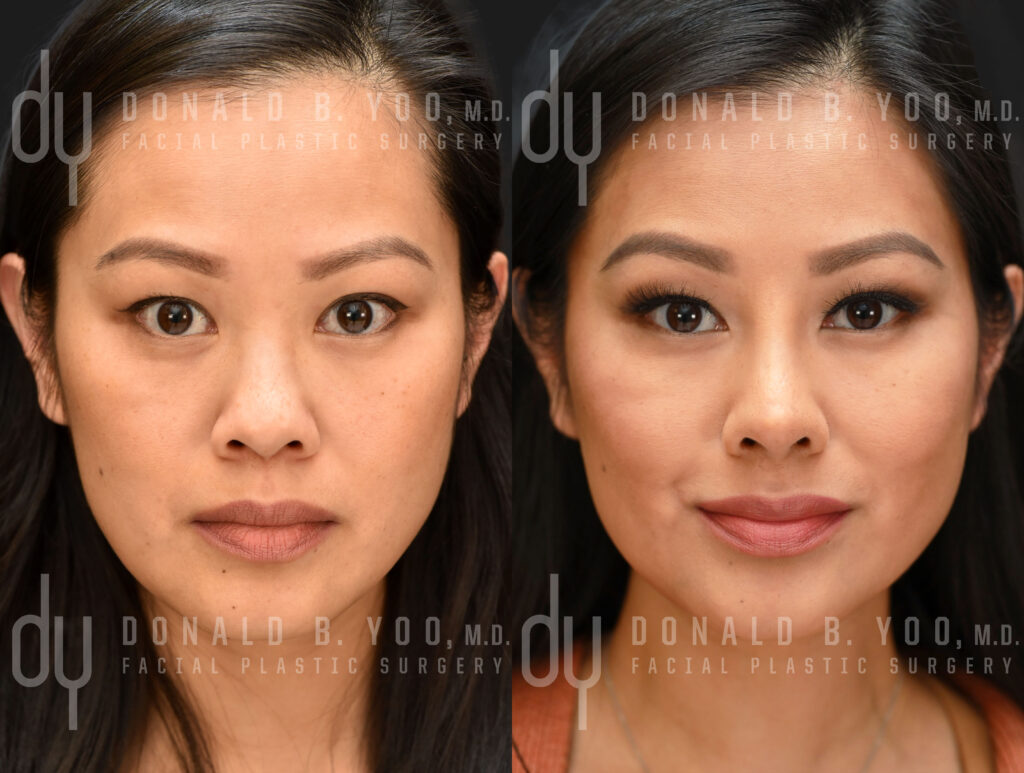
Which country is best for rhinoplasty Asian?
The best country of Asian rhinoplasty is the country that has the best rhinoplasty surgeon for you. Asian rhinoplasty is not a one-size fits all operation, and the selection of the best surgeon for you will come down to your aesthetic and functional goals and how they align with the training, background and expertise of your surgeon. Seoul, South Korea and Beverly Hills, California, United States are two of the most preeminent destinations for Asian rhinoplasty.
How long is recovery from Asian rhinoplasty?
After Asian rhinoplasty patients will have a cast on the bridge of their nose, and sutures will remain in place for a week. Even when additional grafts are taken from the ear, rib or fascia, all the surgical sites including the nose will heal simultaneously with the sutures being removed after the first week. At 2 weeks after surgery, most patients will feel ready to return to public, although the nose will be swollen. Much of the swelling will dissipate over the first 3-6 months, though it will take 1-2 years for full healing.
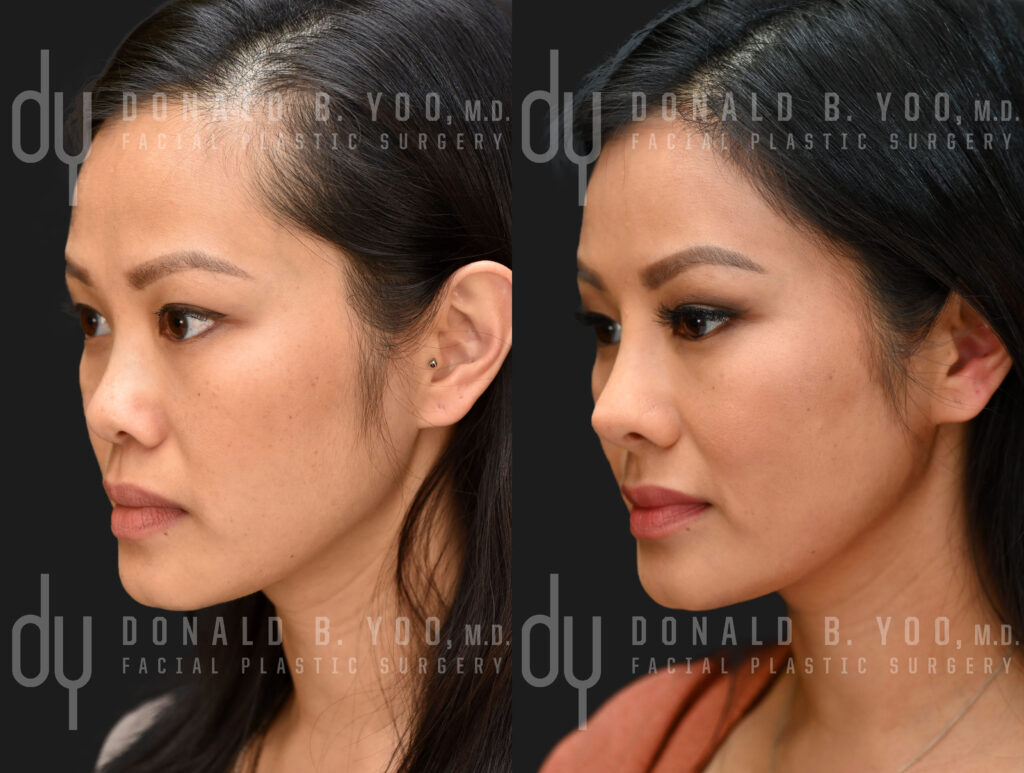
Where is the safest place to get a nose job?
The United States is known for having some of the highest standards in healthcare and cosmetic plastic surgery. The United States enjoys the privilege of having the very best universities and medical schools in the entire world, and ability to select only the best and brightest students to become medical doctors and surgeons equipped with the most comprehensive education and rigorous training. The US offers exceptional patient care and superlative plastic surgery and rhinoplasty outcomes, drawing patients domestic and international.
